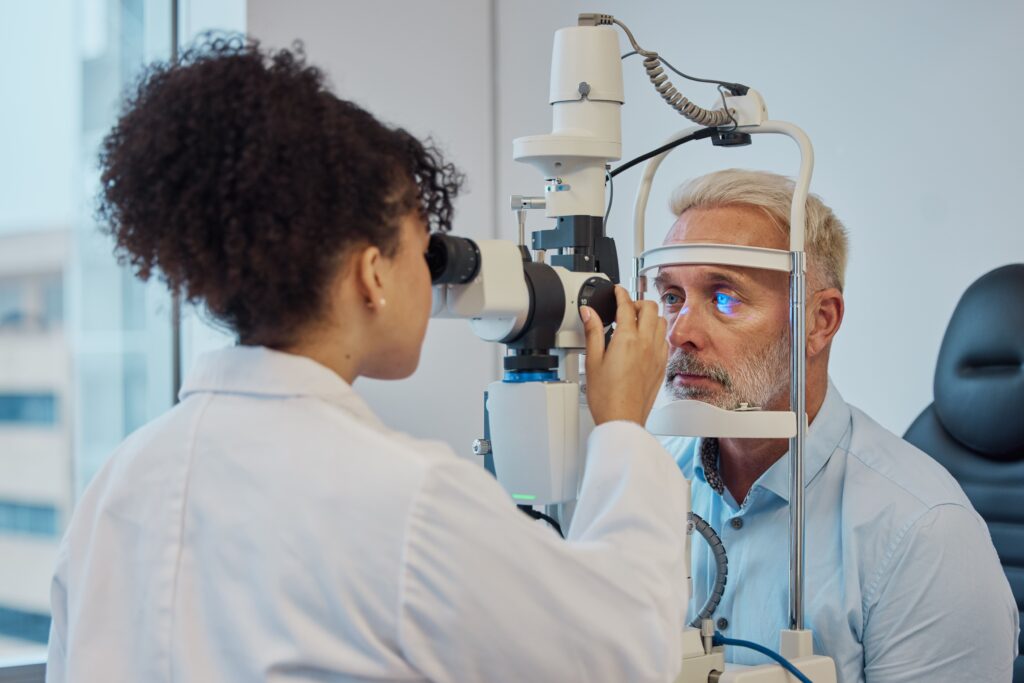Featured
Laser eye surgical treatment has actually transformed vision correction, offering countless people an option to glasses and call lenses. Over the years, developments in innovation and strategies have significantly boosted the security, accuracy, and outcomes of these treatments. Let's check out the advanced advancements forming the future of laser eye surgical procedure.
Among the most revolutionary advancements is wavefront-guided LASIK. This technology uses thorough 3D mapping of the eye to identify special flaws in an individual's vision. Unlike typical LASIK, which focuses largely on fixing typical refractive errors like astigmatism, farsightedness, and nearsightedness, wavefront technology addresses higher-order aberrations that can affect evening vision and contrast sensitivity. The outcome is sharper, a lot more accurate vision customized per client.
![]()
Unlike LASIK, which entails producing a corneal flap, SMILE only needs a small cut to remove a thin layer of cells (lenticule) from the cornea. This technique maintains corneal stamina and decreases the threat of completely dry eyes.
![]()
The introduction of femtosecond lasers has changed corneal surgical procedure. These ultra-fast lasers run with unbelievable accuracy, enabling cosmetic surgeons to develop smoother and extra foreseeable incisions. In LASIK treatments, femtosecond lasers are used to produce the corneal flap with exceptional precision, decreasing issues and improving recovery times.
Topography-guided laser therapies focus on attending to irregularities in the corneal surface area. This advancement is specifically handy for patients with corneal scars or irregular astigmatism. By creating an extra consistent corneal shape, topography-guided treatments can boost both vision high quality and client satisfaction.
Expert system (AI) is significantly being integrated into laser eye surgery. AI-driven formulas evaluate huge quantities of information to aid doctors in preparation and executing procedures with greater accuracy. This modern technology guarantees ideal therapy specifications and decreases the probability of human error.
Thanks to developments in technology, more individuals are currently eligible for laser eye surgical treatment. Strategies like SMILE and topography-guided therapies make it feasible to treat people with problems that were previously thought about contraindications, such as high thin corneas or refractive errors.
Modern laser eye surgery methods prioritize person convenience and quicker recovery. Boosted accuracy reduces tissue damages, decreasing swelling and allowing clients to return to their daily tasks within days.
While not a refractive surgery by itself, corneal cross-linking has actually come to be a crucial treatment for keratoconus people. When combined with laser techniques, it can improve and stabilize the cornea vision for those with this dynamic eye condition.
Conclusion
Advancements in laser eye surgical treatment remain to push the boundaries of what's feasible in vision adjustment. From tailored treatments to AI-driven technologies, these innovations are making surgical procedure much safer, extra effective, and accessible to a larger variety of clients. If you're taking into consideration laser eye surgical treatment, speak with a certified eye doctor to find out just how these advancements can benefit your particular requirements and way of living.
- Personalized Wavefront-Guided LASIK
Among the most revolutionary advancements is wavefront-guided LASIK. This technology uses thorough 3D mapping of the eye to identify special flaws in an individual's vision. Unlike typical LASIK, which focuses largely on fixing typical refractive errors like astigmatism, farsightedness, and nearsightedness, wavefront technology addresses higher-order aberrations that can affect evening vision and contrast sensitivity. The outcome is sharper, a lot more accurate vision customized per client.
- SMILE: Little Cut Lenticule Extraction

Unlike LASIK, which entails producing a corneal flap, SMILE only needs a small cut to remove a thin layer of cells (lenticule) from the cornea. This technique maintains corneal stamina and decreases the threat of completely dry eyes.
- Femtosecond Laser Innovation

The introduction of femtosecond lasers has changed corneal surgical procedure. These ultra-fast lasers run with unbelievable accuracy, enabling cosmetic surgeons to develop smoother and extra foreseeable incisions. In LASIK treatments, femtosecond lasers are used to produce the corneal flap with exceptional precision, decreasing issues and improving recovery times.
- Topography-Guided Treatments
Topography-guided laser therapies focus on attending to irregularities in the corneal surface area. This advancement is specifically handy for patients with corneal scars or irregular astigmatism. By creating an extra consistent corneal shape, topography-guided treatments can boost both vision high quality and client satisfaction.
- Synthetic Knowledge in Laser Surgical Procedure
Expert system (AI) is significantly being integrated into laser eye surgery. AI-driven formulas evaluate huge quantities of information to aid doctors in preparation and executing procedures with greater accuracy. This modern technology guarantees ideal therapy specifications and decreases the probability of human error.
- Enhanced Candidateship for Surgical Treatment
Thanks to developments in technology, more individuals are currently eligible for laser eye surgical treatment. Strategies like SMILE and topography-guided therapies make it feasible to treat people with problems that were previously thought about contraindications, such as high thin corneas or refractive errors.
- Faster Recovery Times
Modern laser eye surgery methods prioritize person convenience and quicker recovery. Boosted accuracy reduces tissue damages, decreasing swelling and allowing clients to return to their daily tasks within days.
- Corneal Cross-Linking for Keratoconus
While not a refractive surgery by itself, corneal cross-linking has actually come to be a crucial treatment for keratoconus people. When combined with laser techniques, it can improve and stabilize the cornea vision for those with this dynamic eye condition.
Conclusion
Advancements in laser eye surgical treatment remain to push the boundaries of what's feasible in vision adjustment. From tailored treatments to AI-driven technologies, these innovations are making surgical procedure much safer, extra effective, and accessible to a larger variety of clients. If you're taking into consideration laser eye surgical treatment, speak with a certified eye doctor to find out just how these advancements can benefit your particular requirements and way of living.
Latest Posts
Discover Cut Costs on Car Maintenance with Montclare Auto Repair’s Special Deals
Published en
1 min read
Explore the Premier Auto Repair Offers in Montclare, Chicago
Published en
1 min read
Don’t Miss Limited-Time Auto Repair Offers in Chicago at Montclare Auto Repair
Published en
1 min read
More
Latest Posts
Discover Cut Costs on Car Maintenance with Montclare Auto Repair’s Special Deals
Published May 25, 25
1 min read
Explore the Premier Auto Repair Offers in Montclare, Chicago
Published May 24, 25
1 min read
Don’t Miss Limited-Time Auto Repair Offers in Chicago at Montclare Auto Repair
Published May 24, 25
1 min read